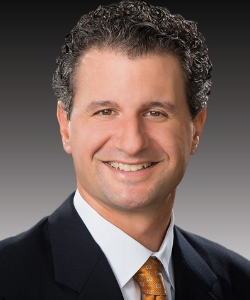Explain loose elbow bone fragments.
Loose bodies in the elbow refer to tiny fragments of bone or cartilage found floating inside the joint. These may appear as a result of injury or wear and tear due to aging.
Are you feeling pain in your elbow that comes and goes, like a dull ache? If so, you could have a condition called a loose bone fragment in the elbow. This condition is usually caused by trauma to the elbow joint or excessive joint use. It can cause significant discomfort and limit mobility – not ideal if you’re active or rely on your arm for work.
This guide aims to provide comprehensive information about loose elbow bone fragments:
 So read on to ensure you have all the facts before talking with your doctor about managing this potentially painful issue.
So read on to ensure you have all the facts before talking with your doctor about managing this potentially painful issue.
Contact Sforzo | Dillingham | Stewart Orthopedics + Sports Medicine and arrange a consultation with one of our doctors if you have loose elbow bone fragments. Your medical issues can be recognized and treated by our fellowship-trained doctors.
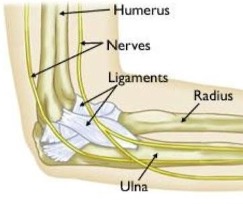 Your ability to bend, extend, supinate (palm up), and pronate (palm down) your wrist is made possible by the complicated and intricate joint known as the elbow. This fascinating elbow anatomy is made of three different bones – the humerus from the upper arm and both the ulna and radius in the forearm region.
Your ability to bend, extend, supinate (palm up), and pronate (palm down) your wrist is made possible by the complicated and intricate joint known as the elbow. This fascinating elbow anatomy is made of three different bones – the humerus from the upper arm and both the ulna and radius in the forearm region.
These bones connect to form a joint and are covered with articular cartilage – a protective and cushioning layer that absorbs the various movement forces. Additionally, the synovial membrane covers all other inner surfaces; this tissue produces a small amount of grease-like fluid for extra lubrication so your elbow can bend and rotate effortlessly in optimal health.
A complex engineering marvel, the elbow is held together with muscles, ligaments, and tendons. It functions like a hinge-pivot hybrid, allowing arm extension in one movement and rotation of the lower limb through another. Additionally, several muscles, nerves, and tendons intersect at this joint to provide flexibility and stability.
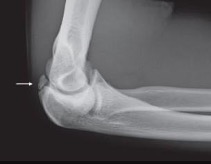
Your elbow joint is carefully held together by ligaments, muscles, cartilage, and tendons from three distinct bones. At times, fragments of bone or cartilage can come loose and wander about inside the joint cavity.
Without any initial indications, the condition can progress, leading to elbow dysfunction and arthritis. Later, pain may persist with additional symptoms that impede day-to-day activities and normal arm movement.
The symptoms of having a loose fragment, also known as a “loose body,” in your elbow can frequently be confused with those of other joint injuries. For this reason, you must receive an expert evaluation for the most accurate diagnosis and treatment plan.
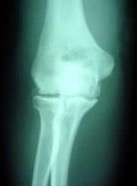 Osteochondritis dissecans is an oft-observed condition in which portions of the elbow joint’s bone lose their steady blood supply and split away from the rest. As a result, fragments of this weakened bone can become dislodged, along with its protective cartilage layer that may fracture or loosen over time.
Osteochondritis dissecans is an oft-observed condition in which portions of the elbow joint’s bone lose their steady blood supply and split away from the rest. As a result, fragments of this weakened bone can become dislodged, along with its protective cartilage layer that may fracture or loosen over time.
Osteoarthritis is a degenerative disease. It affects the bones and develops over time due to worn-out cartilage. Due to this disorder, loose fragments in the elbow are not uncommon.
Engaging in strenuous sports and laborious overhead activities increase your odds of developing a loose fragment due to elbow injuries, such as dislocations or fractures. An elbow can become susceptible even when no direct trauma has occurred.
Physical activity-induced elbow pain is the telltale indicator of a loose fragment in your elbow. While this type of agony can be seen with multiple issues related to elbows, take note if you experience any of these additional symptoms, as they are usually exclusive to this condition:
Initially, you may not experience any symptoms; however, should the fragment loosen and become lodged between two parts of your elbow joint over time, it can cause discomfort. As the Joint Fragment floats in its fluid environment, it will receive nourishment for sustained growth.
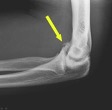
Nonsurgical Treatment
If symptoms remain after a reasonable time, splinting or casting the troubled arm may be beneficial to allow the joint to rest. Immobilizing this area and providing it with 2-4 months of relaxation can aid kids and adolescents diagnosed with this issue. Moreover, physical therapy is also suggested for some patients to enhance strength around that region and amplify movement.
Surgical Treatment
If any of the following symptoms appear, it may be time to consider surgery as a way to get relief from a loose elbow fragment:
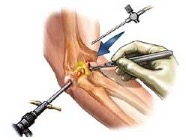 Minimally invasive elbow arthroscopic surgery is often recommended to treat a loose fragment in the elbow. During this procedure, your physician will make minor incisions around the elbow to introduce long, fine surgical instruments into the joint and remove any present fragments. This process ensures minimal disruption of healthy tissue while facilitating a successful outcome.
Minimally invasive elbow arthroscopic surgery is often recommended to treat a loose fragment in the elbow. During this procedure, your physician will make minor incisions around the elbow to introduce long, fine surgical instruments into the joint and remove any present fragments. This process ensures minimal disruption of healthy tissue while facilitating a successful outcome.
An orthopedic surgeon can precisely verify the exact placement and remove any debris by introducing a miniature camera through one of the holes.
You will spend about one hour in the recuperation area following the operation before being discharged. In more complex arthroscopic operations, hospitalization may be required overnight. Therefore, before leaving the premises, with all clear instructions, including medication dosages, further need for ice/elevation, and proper dressing care, you must have someone to drive you back home and stay with you during the initial night after returning from surgery.
Recovering from arthroscopy is generally quicker than open surgery, but it may take weeks to months until your elbow joint has completely healed. Therefore, in the coming weeks after surgery, you can anticipate some soreness and pain – although if more extensive surgical intervention was done, it might take longer for relief to be felt. To help with this, your physician will likely recommend taking the prescribed medication regularly for several days post-surgery.

Taking the necessary precautions of icing and elevating your elbow immediately following surgery for up to 48 hours is critical to limit considerable swelling and alleviate pain. Whether you’re lying down or resting on a recliner, make sure that you always keep your arm higher than your heart, with its hand positioned even higher than the elbow itself. Depending upon which procedure was performed, your physician may have additional instruction extending beyond this time frame when discussing ice and elevation periods.
Regaining your normal daily activities is essential to recovery, and rehabilitation plays a major role. Your surgeon will create an exercise program tailored for you to help restore the strength and motion of your elbow and forearm.
Contact our team of orthopedics and sports medicine specialists at Sforzo | Dillingham | Stewart Orthopedics + Sports Medicine immediately. We specialize in healing sports-related illnesses, hip fractures, loose elbow bone fragments, and spinal injuries with unmatched care. So call us right away to schedule a consultation at 941.378.5100.
Loose bodies in the elbow refer to tiny fragments of bone or cartilage found floating inside the joint. These may appear as a result of injury or wear and tear due to aging.
Loose bone fragments in elbow symptoms include:
Two techniques are used by do diagnose loose elbow bone fragments.
To treat a loose fragment in the elbow, your doctor may recommend minimally invasive arthroscopic surgery. During this process, tiny incisions are made around the joint to insert ultra-fine surgical tools and retrieve any fragments that might be present. This method works best because it limits interference with healthy tissue while ensuring positive results.
As healthcare is ever changing, Sforzo | Dillingham | Stewart Orthopedics + Sports Medicine, is doing things differently…
